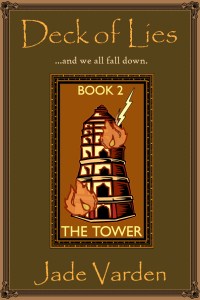Break it down to the basics, and writing is simply this: painting a picture with words. You have to use 26 letters, repeated in millions of different patterns, to make someone else picture exactly what you want them to see. That makes you a little bit insane, really. You've set yourself to an extremely ambitious and difficult task. But if you break it down to basics, there are a few tricks you can master to make painting with that word brush a little bit easier.
Do You See What I See?
Picture me standing next to a tree. You're going to come up with an image of me, and an image of a tree, based upon your own experiences. If you're from the Pacific Northwest, you might be seeing a towering redwood in your mind's eye. Someone from the southern US may conjure up an image of a drooping weeping willow, or a fragrant magnolia.
So maybe I ought to tell you to picture me standing next to an elm tree. If you've never seen an elm, you aren't going to be able to draw a clear image. So now I've got to tell you the elm is tall and slender, with a straight trunk covered in grayish bark.
Is that picture getting a bit more clear? That's the first thing to remember: if you're going to draw a picture, draw a complete one. Give me enough details, as a reader, to fill in the details. The more clearly I can see that picture, the more deeply I'm involved with your story.
- Make comparisons: Give readers a frame of reference when needed. Lot of people have never seen caviar, an expensive delicacy. So tell people it looks like shiny little black marbles, only about one-tenth the size. Most people have seen marbles.
- Add color: Don't ever forget to include colors. Tell people to envision a girl and they will. Tell people to envision a girl with flaming red hair, and now you're in control of the scene.
- Include background: I can picture a red-haired girl floating in a white space, but it's going to feel much more real if you tell me to see her in a wide, flat meadow filled with small, white flowers. Include background, and paint a clearer picture.
Make your reader visualize, and you'll make them like your writing much more. Authors have to paint with words -- a monumental feat, to be sure, but not an impossible one.























